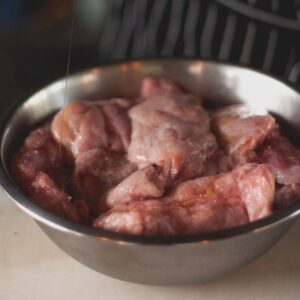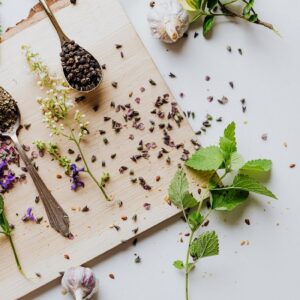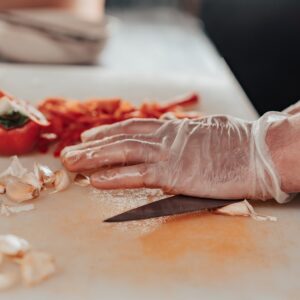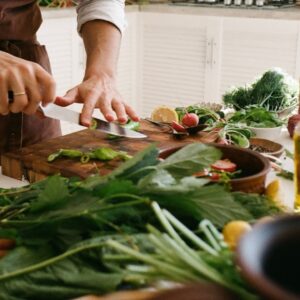Baking is often referred to as the art of combining precise measurements with culinary creativity. From the perfect loaf of bread to delectable pastries, the science of baking plays a vital role in achieving consistent and delicious results. While some may see baking as a simple process of mixing ingredients and putting them in the oven, there is a profound understanding of the chemical reactions and physical transformations that take place during baking. In this article, we’ll delve into the science of baking, exploring key ingredients, techniques, and the magic that occurs when you blend them together.
The Role of Key Ingredients in Baking
- Flour: Flour serves as the foundation of most baked goods, providing structure and texture. The two primary types of flour used in baking are all-purpose flour and cake flour. All-purpose flour contains a moderate amount of protein, making it versatile for a wide range of recipes. Cake flour, on the other hand, has a lower protein content, resulting in a tender crumb and delicate texture in cakes and pastries. When flour is mixed with liquid and subjected to heat during baking, gluten proteins in the flour form a network that traps gases, allowing the dough or batter to rise.
- Leavening Agents: Leavening agents, such as baking powder and baking soda, are essential for creating light and airy baked goods. Baking soda is a base that requires an acid (often buttermilk, yogurt, or vinegar) to produce carbon dioxide gas, which causes the dough or batter to rise. Baking powder, on the other hand, contains both an acid and a base, making it a self-contained leavening agent. As the dough or batter heats up, the carbon dioxide gas expands, causing the product to rise and create a soft and fluffy texture.
- Fats: Fats, such as butter, oil, or shortening, play a crucial role in adding richness and tenderness to baked goods. When fats are mixed with flour, they coat the gluten proteins, preventing them from forming a strong network. As a result, the baked goods become tender and crumbly. Additionally, fats contribute to the overall flavor and mouthfeel of baked goods, making them a vital component in many recipes.
- Eggs: Eggs are a multifunctional ingredient in baking. They act as binders, helping to hold the ingredients together, and they also provide structure and stability. The proteins in eggs coagulate during baking, helping to set the structure of the baked goods. Moreover, eggs add moisture and richness to the final product, making them indispensable in many baking recipes.
- Sugar: Beyond adding sweetness, sugar plays several critical roles in baking. Sugar helps tenderize the crumb by weakening gluten formation. It also retains moisture, enhancing the shelf life of baked goods and contributing to their texture. Additionally, sugar aids in browning due to the Maillard reaction—a chemical reaction between amino acids and reducing sugars that creates a complex range of flavors and aromas in the crust of baked goods.
- Liquids: Liquids, such as water, milk, buttermilk, or juice, hydrate the dry ingredients and activate the leavening agents. The steam generated from liquids during baking helps the dough or batter rise further, resulting in a light and airy texture. Moreover, liquids contribute to the tenderness and moistness of the finished baked goods.
The Science Behind Baking Techniques
- Mixing Methods: The way ingredients are mixed together significantly affects the texture and structure of the final product. There are three primary mixing methods used in baking:
- The Creaming Method: This method involves beating fat (usually butter) with sugar until light and fluffy. Eggs are then added gradually, followed by dry ingredients and liquids. The creaming method is commonly used in making cookies, cakes, and some pastries.
- The Muffin Method: In this method, the dry ingredients are combined in one bowl and the wet ingredients in another. The wet ingredients are then added to the dry ingredients, and the mixture is gently mixed until just combined. This method is ideal for making muffins, quick breads, and pancakes.
- The Biscuit Method: In the biscuit method, cold fat is cut into the dry ingredients until the mixture resembles coarse crumbs. Liquids are then added to form a dough. This method is commonly used for biscuits, scones, and pie crusts.
- Fermentation and Proofing: In the process of bread baking, fermentation plays a crucial role. Fermentation is the action of yeast on sugars in the dough, producing carbon dioxide gas. This gas gets trapped within the gluten network, causing the dough to rise. After the dough has been fermented, it is shaped and allowed to rise again during proofing, which further develops its structure and flavors.
- Oven Temperature and Timing: The oven temperature and baking time are critical factors in baking. The temperature affects the speed and evenness of baking, while the timing ensures that the baked goods are fully cooked but not overdone. High oven temperatures can lead to excessive browning and a crust that forms too quickly, while low temperatures can result in undercooked centers and uneven baking.
- Resting Periods: Many baked goods, such as cookie and pastry dough, benefit from resting periods in the refrigerator before baking. Resting allows the dough to relax, and it enhances the flavors as the ingredients meld together. Resting also prevents excessive spreading during baking, leading to a better-defined shape and texture.
- Oven Spring: Oven spring refers to the final burst of rising that occurs when baked goods are placed in a hot oven. As the temperature increases, the air and steam trapped within the dough expand, leading to an additional rise. Proper oven spring is crucial for achieving a well-risen and light texture in bread and some pastries.
- Cooling and Setting: After baking, it’s essential to allow baked goods to cool properly to finish setting. During the cooling process, residual heat continues to cook the center of the baked goods while the exterior cools and develops a desirable texture. Improper cooling can result in a gummy or undercooked center.
Baking as a Balance of Science and Art
While the science of baking is essential for achieving consistent results and understanding how various ingredients and techniques interact, baking is also an art that allows for creativity and personal expression. Experienced bakers often experiment with flavor combinations, add various mix-ins, and develop their techniques to craft unique and delicious creations.
As you delve deeper into the world of baking, you’ll develop a greater appreciation for the science behind it. Understanding the role of each ingredient and mastering different baking techniques will empower you to create not only tasty but also visually appealing and perfectly textured baked goods. As with any skill, practice and patience are essential to becoming a confident baker.
As you continue your baking journey, you’ll come across various challenges and triumphs that will deepen your understanding of the science behind this delightful culinary art. Here are some advanced baking concepts to further enhance your skills and take your baked goods to new heights:
- Sourdough Bread: Delve into the world of sourdough baking, which involves using wild yeast and lactobacilli to ferment the dough, creating a unique and tangy flavor. Sourdough baking requires patience and attention to detail, as you’ll work with a natural starter that needs regular feeding and nurturing. The fermentation process and longer proofing times in sourdough bread contribute to a distinct crumb structure and crust.
- Gluten-Free Baking: Explore the science of gluten-free baking, which involves understanding the properties of alternative flours and binders. Gluten-free baked goods lack the protein structure provided by gluten, so it’s essential to experiment with various combinations of flours and starches to achieve the desired texture and rise. Ingredients like xanthan gum or psyllium husk can act as binders to improve the structure of gluten-free baked goods.
- Pastry and Pie Crusts: Master the art of making flaky and tender pastry and pie crusts. Understanding the importance of cold fats and minimal mixing will lead to delightful results. Experiment with different fats, such as butter, shortening, or lard, to achieve the desired flavor and texture.
- Cake Decorating: Take your cake baking to the next level by learning various cake decorating techniques. Explore buttercream piping, fondant work, and other decorative elements to create stunning and eye-catching cakes.
- High-Altitude Baking: If you live in a high-altitude area, baking can present unique challenges due to lower atmospheric pressure and drier conditions. Understanding the adjustments needed for specific recipes will help you overcome these challenges and achieve consistent results.
- Molecular Gastronomy: For the more adventurous baker, delve into the realm of molecular gastronomy and explore innovative techniques like spherification, foams, and gels to create visually stunning and unconventional desserts.
- Egg Replacements: Explore different egg replacements in vegan baking, such as flax eggs, applesauce, or aquafaba (the liquid from canned chickpeas). Understanding the properties of these alternatives will help you create vegan versions of your favorite baked goods.
- Temperature and Ingredient Modifications: Learn how to adjust baking times and temperatures, as well as the quantity of certain ingredients, to achieve specific results. For example, reducing sugar or fat can result in lighter, healthier baked goods, while higher oven temperatures can create a more caramelized crust.
- Troubleshooting: As you experiment and grow as a baker, you’ll encounter challenges and occasional failures. Embrace these experiences as opportunities to learn and troubleshoot. Keep a baking journal to record your observations, adjustments, and improvements, which will help you refine your techniques over time.
- Baking for Special Dietary Needs: Explore baking for people with specific dietary restrictions, such as gluten-free, dairy-free, or nut-free options. Understanding the science behind these modifications will enable you to cater to a broader range of tastes and needs.
Remember, baking is both an art and a science, and there’s always more to learn and discover. The key to becoming a skilled baker is to practice, experiment, and embrace the joy of the process. The science of baking offers a fascinating blend of chemistry, physics, and culinary skill, giving you the power to create delectable treats that delight both the palate and the senses.
Additionally, join baking communities, attend workshops, and engage with experienced bakers to gain new insights and techniques. Don’t be afraid to ask questions and seek advice, as the baking community is often generous with sharing knowledge and experiences.
The science of baking is an exciting and rewarding journey that allows you to create mouthwatering delights through a blend of precise measurements and artistic flair. As you deepen your understanding of key ingredients and master various baking techniques, you’ll be well-equipped to produce an array of delectable treats, from simple muffins to elaborate pastries. The more you delve into the science of baking, the more you’ll appreciate the intricacies and beauty behind each creation that emerges from your oven. So, let your creativity soar, and let the magic of baking continue to fill your home with the irresistible aroma of freshly baked goodies. Happy baking!




